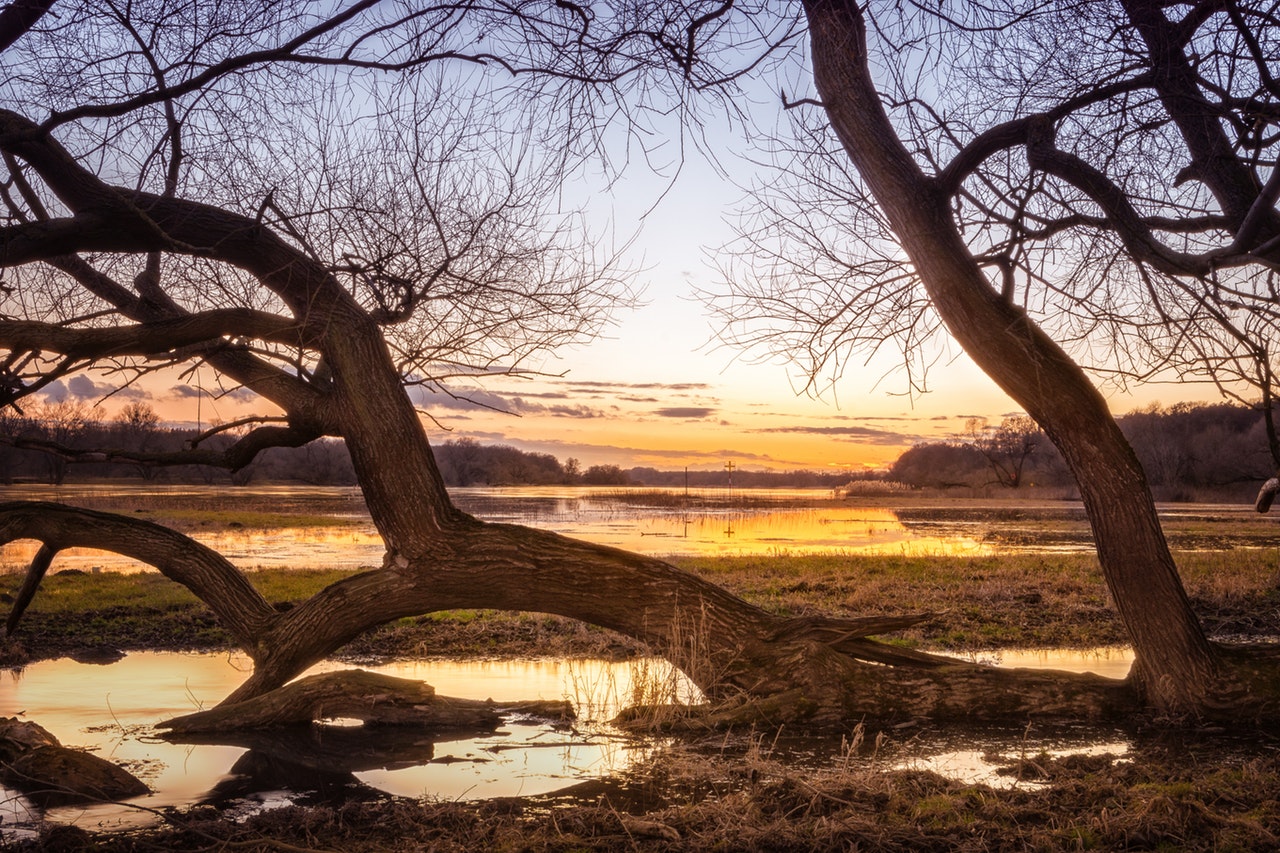Trees are often known for their longevity, but eventually—live every living thing—they’ll die. Sometimes the process is hurried by disease or disaster, but unless you look carefully you may not notice a dying tree. For your safety, and those around you, it’s important to examine your trees and look for signs of life—and death.
Listing Limbs
When a trees trunk and limbs are leaning at odd angles, it can be a sign of trouble. Whether the problem starts at the base of the tree or results from disease further up, structural changes can occur. Of course, some trees grow at strange angles because of location, weather, or surviving storms or other natural events. But sudden changes to mature trees usually indicate tree health problems.
When Leaves Leave
Unlike evergreens, many deciduous trees will experience color changes and drop leaves in the fall (even in Florida). But naked trees during the growing season—especially evergreen pine—means the tree is in trouble. A dying tree that has lost leaves shows that nutrients are no longer making their way out to the limbs and branches. The damage is likely deep into the trunk by this point.
This Trunk’s Not Barking
Tree bark being shed from the trunk is another sign of disease and death. Loss of moisture and growth beneath the bark and into the main part of the trunk prevents it from keeping this vital protective layer.
Getting to the Root of the Problem
Root condition can tell you a lot about the health of a tree. For many large trees that should take deep root, simply being able to see exposed roots is cause for alarm. The tree may still be living, but there is danger that the tree lacks strength and is particularly vulnerable to storms—including being felled by high winds. Also, slimy tree roots, or dry brittle ones, may indicate the presence of fungus, rot, or wood-feasting insects.
Alien Lifeforms
Trees can die from the invasion of various parasitic diseases, but a dead tree can also play host to fungi and various insects.
Calling in the Professionals
Discovering signs of disease or even a dying tree is cause to call in a professional arborist or tree surgeon. They’ll be able to tell if the tree can be treated or must be removed, and can inspect the rest of your foliage to look for other signs of trouble. It’s also important to have them troubleshoot any potential risks on your property or in your neighborhood that either contributed to the death of this tree or is a warning sign for others. Furthermore, commercial property owners need to be particularly diligent to have trees inspected, treated, and (if necessary) removed in order to keep the public safe and reduce liability risks.
In our warmer climate, issues can arise any time of the year that may result in dying trees. Keep an eye on your trees throughout the year, and particularly in anticipation of hurricane season. The rest of your trees will thank you for the healthier property, and you greatly reduce the risk of tragedy from falling limbs, branches, and even entire tree trunks.
